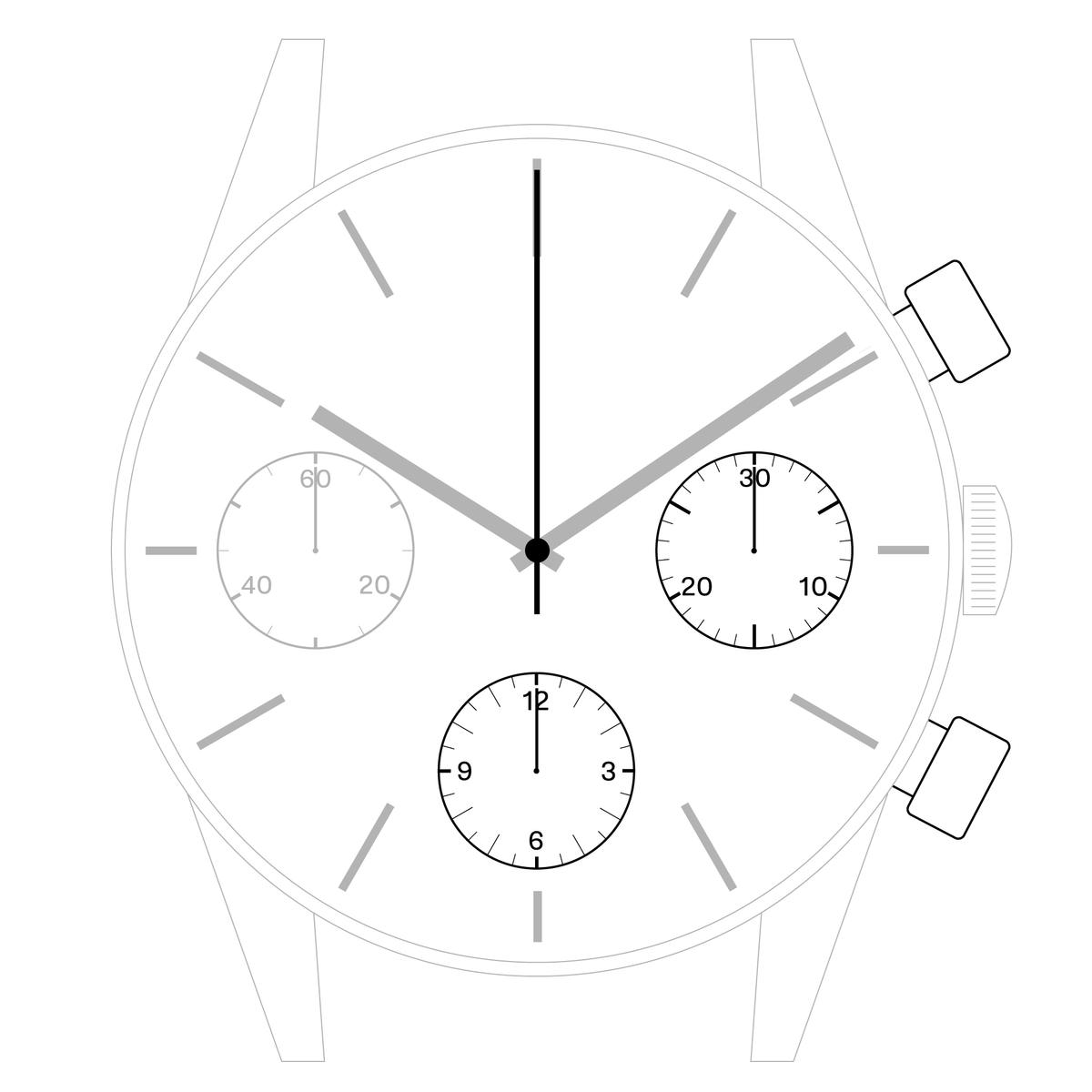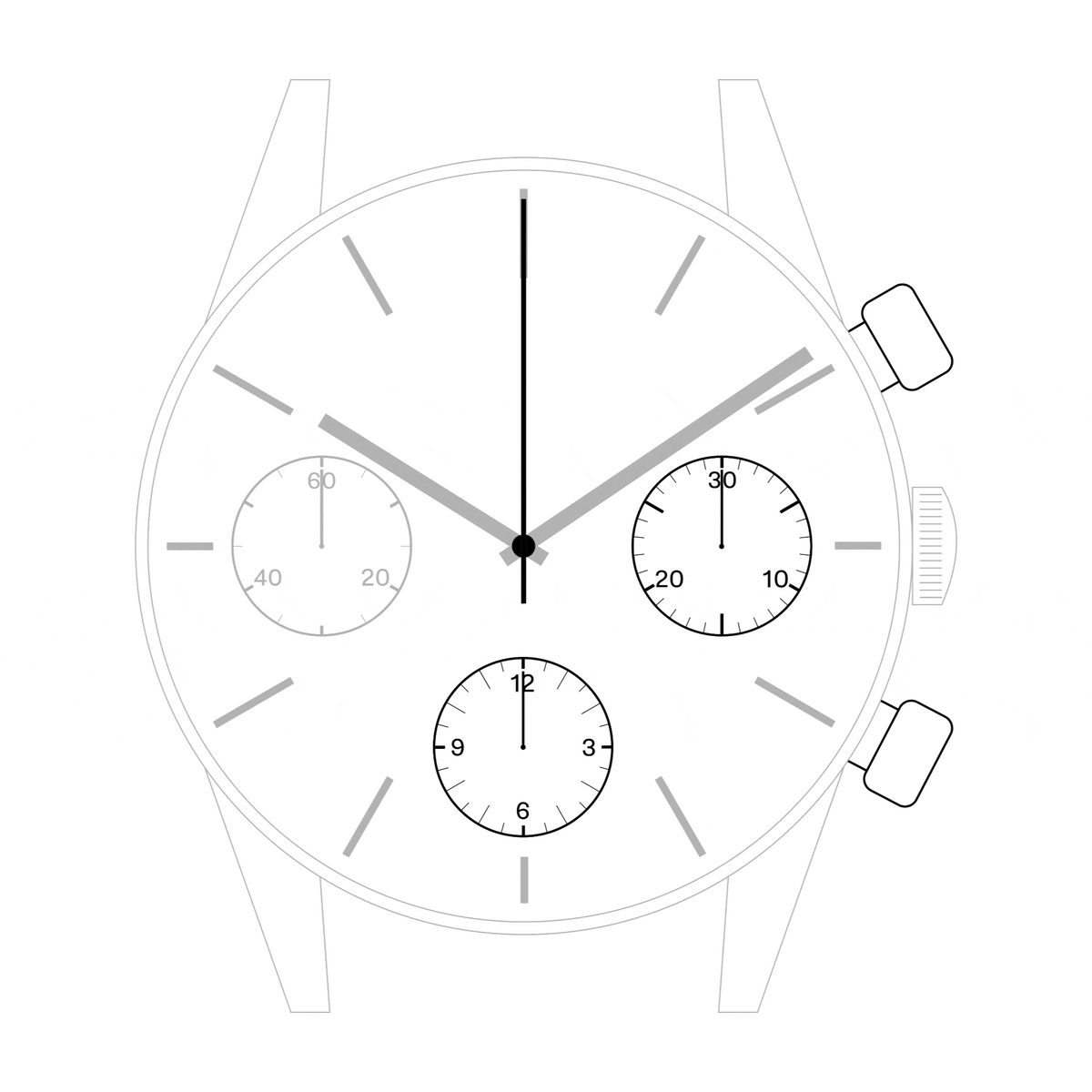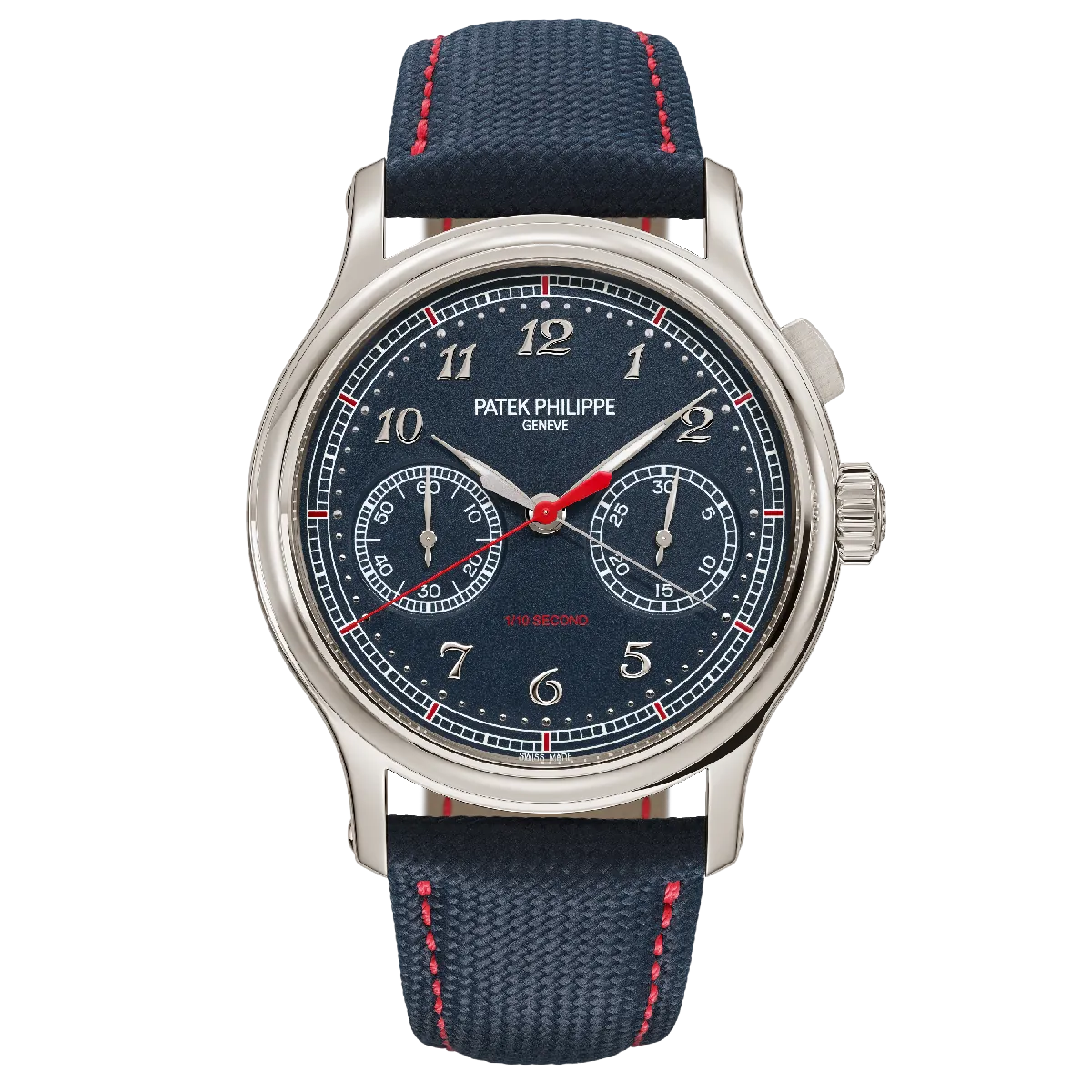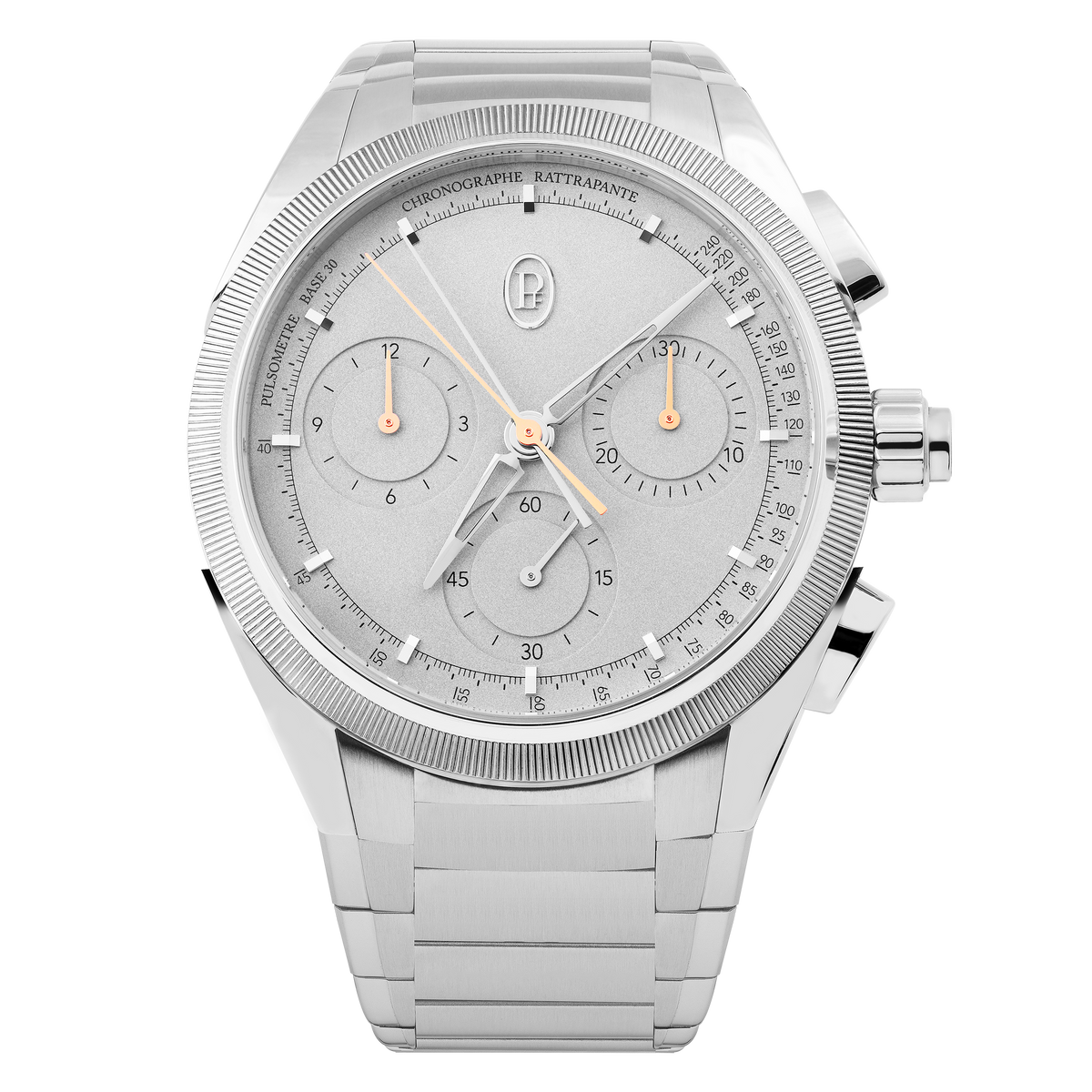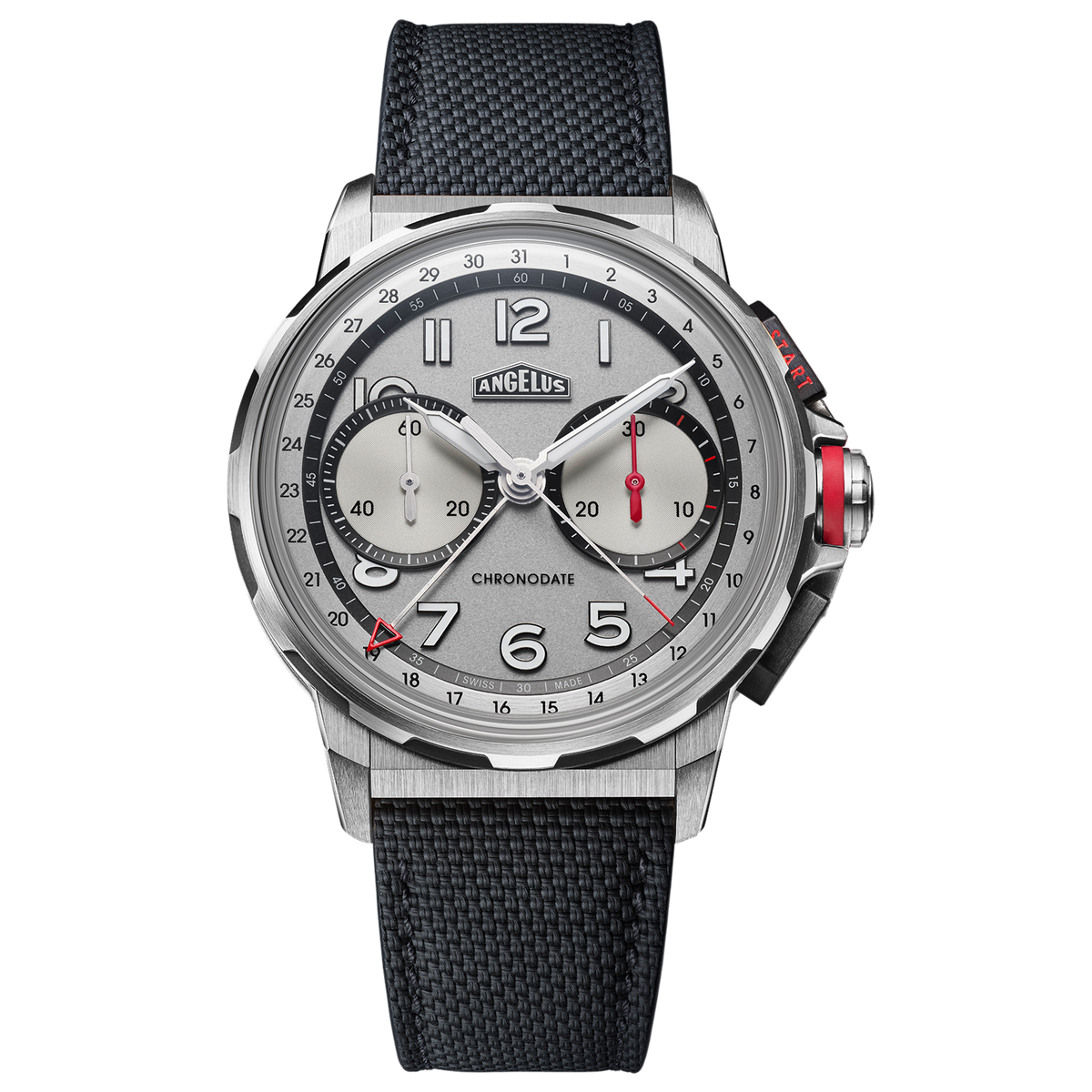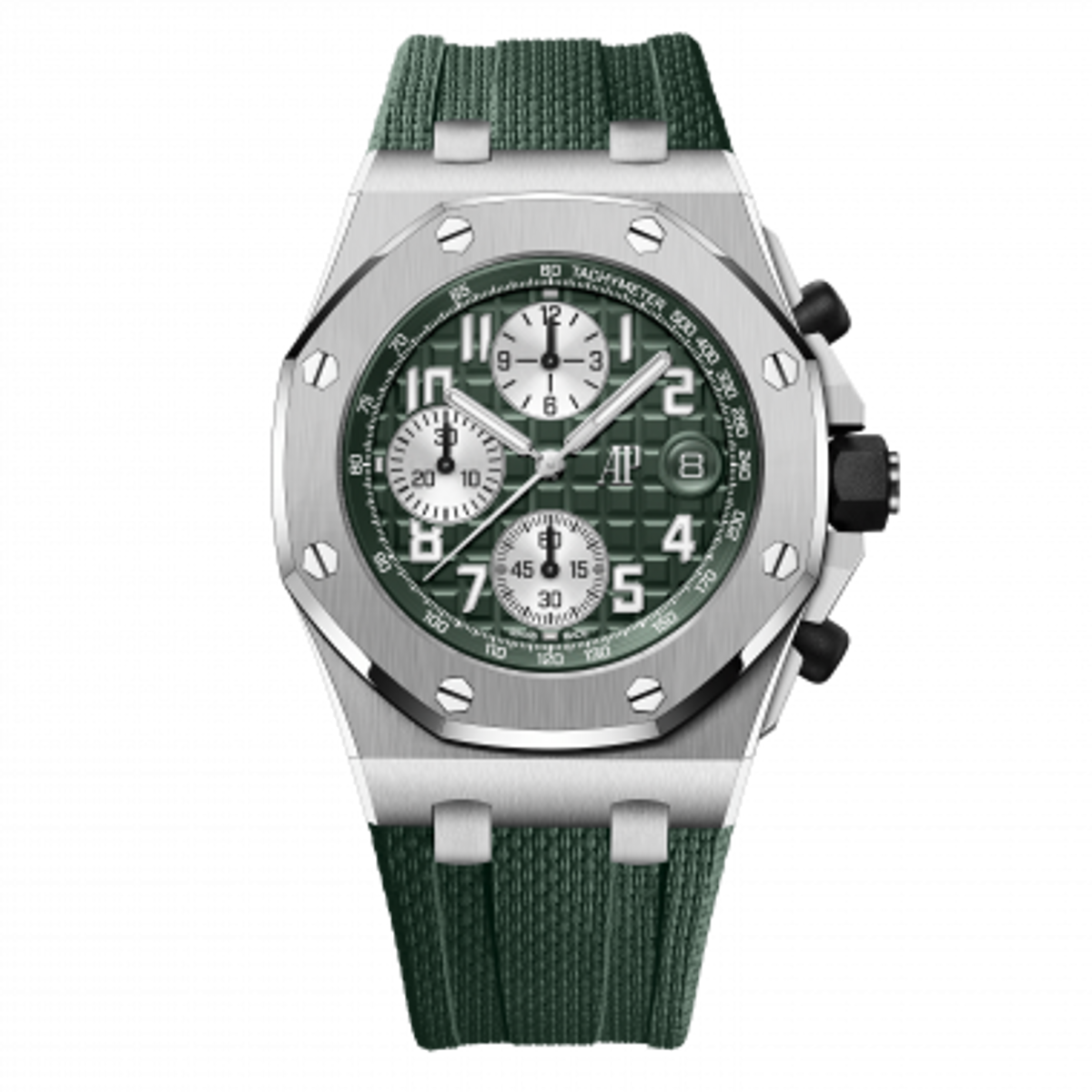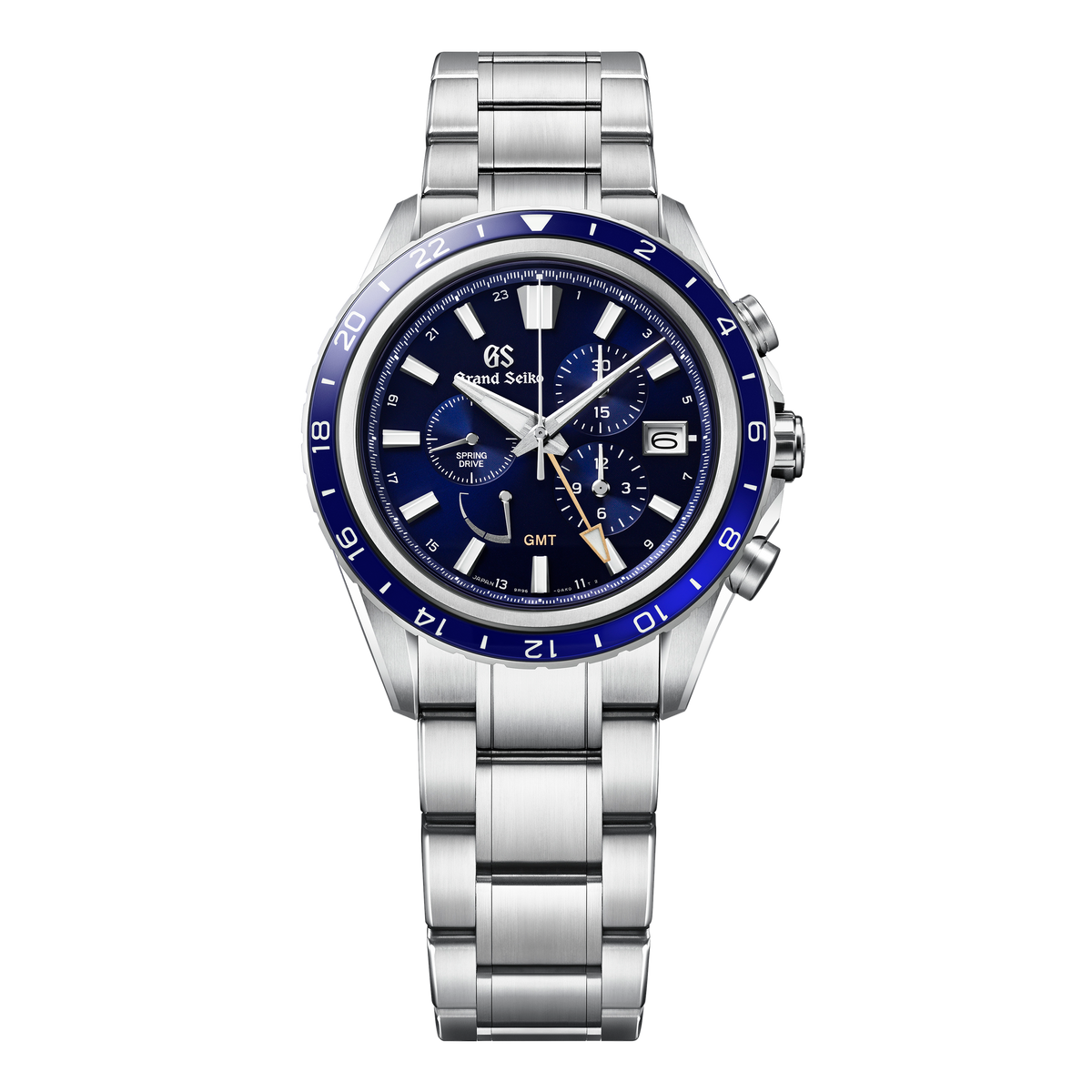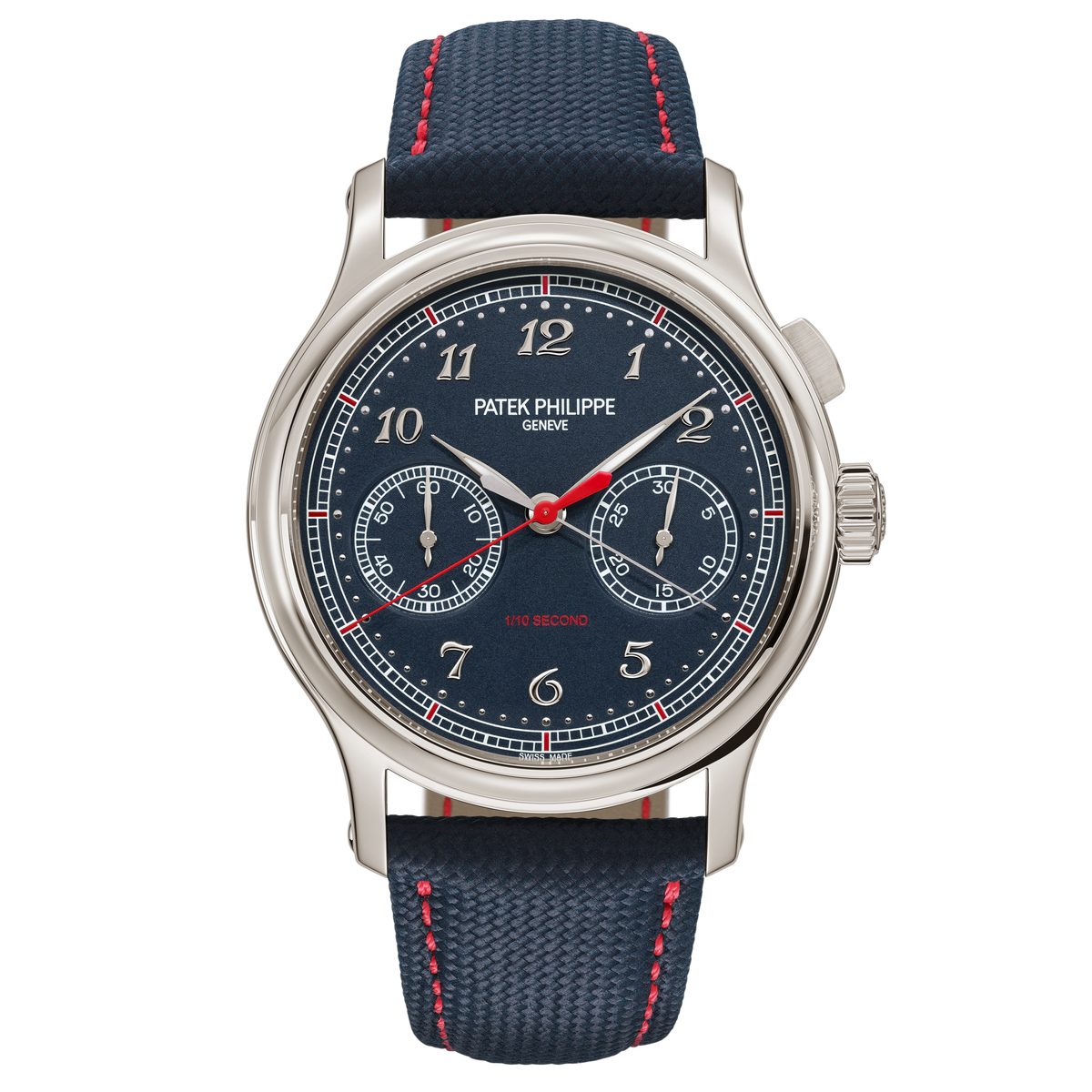In 1821, unaware of the work done by his fellow countryman, Nicolas Mathieu Rieussec – watchmaker by appointment to the King of France – unveiled at an equestrian competition a device capable of measuring the time taken to complete a horse race. Accurate to the nearest fifth of a second, it placed on demand a drop of ink on a rotating enamel dial housed inside a wooden case. This solution was developed in the absence of a zero-resetting device and gave rise to the name ‘chronograph’ (from the Greek for ‘writing time’). Today, the term ‘chronoscope’ (Greek for ‘observing time’) would be more appropriate, given that ink is no longer dropped on the dial. Nicolas Mathieu Rieussec was considered the father of the chronograph until the 2013 rediscovery of Louis Moinet’s compteur de tierces.
Continuous progress was made thereafter, focused on two main areas: miniaturization and precision timekeeping. In 1822, Frédérick Louis Fatton, a former student of Breguet, transformed Rieussec’s invention into a pocket timer. The first wrist chronograph, whose existence is confirmed by a Swiss registered design application in 1909, is the work of A. Ducommun-Muller and was soon followed by Heuer. Strongly involved in sport, the latter manufacturer would subsequently file a large number of patents in the field of high frequency. In 1916, its Mikrograph counter indicated hundredths of a second; and even through electric timing was definitively officialized in 1930, the race for precision has continued until the present day, including with the 2011 launch of the TAG Heuer Mikrotimer Flying 1000 (500 Hz) concept; and the 2012 introduction of the Mikrogirder concept, featuring a balance-wheel beating at 7,200,000 vph, meaning 1000 Hertz – and thus providing a mechanical indication of two thousandths of a second.
One should also note the 1969 launches of the first self-winding chronograph movements: the Chronomatic, produced by Dépraz-Bürgen for Breitling and Heuer-Leonidas; and the El Primero from Zenith, the first self-winding chronograph to beat at 36,000 vph
